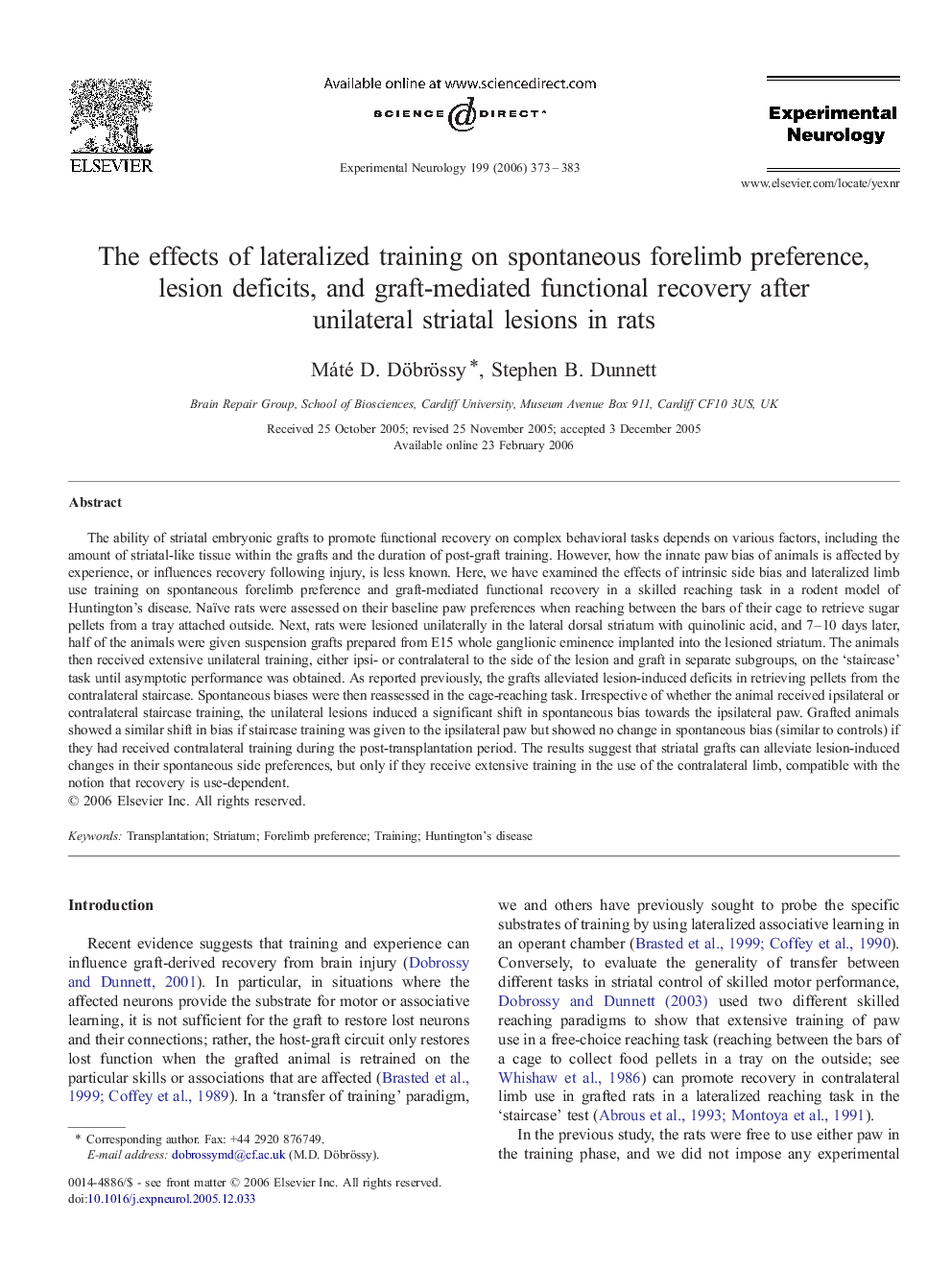| کد مقاله | کد نشریه | سال انتشار | مقاله انگلیسی | نسخه تمام متن |
|---|---|---|---|---|
| 3057571 | 1186600 | 2006 | 11 صفحه PDF | دانلود رایگان |

The ability of striatal embryonic grafts to promote functional recovery on complex behavioral tasks depends on various factors, including the amount of striatal-like tissue within the grafts and the duration of post-graft training. However, how the innate paw bias of animals is affected by experience, or influences recovery following injury, is less known. Here, we have examined the effects of intrinsic side bias and lateralized limb use training on spontaneous forelimb preference and graft-mediated functional recovery in a skilled reaching task in a rodent model of Huntington's disease. Naïve rats were assessed on their baseline paw preferences when reaching between the bars of their cage to retrieve sugar pellets from a tray attached outside. Next, rats were lesioned unilaterally in the lateral dorsal striatum with quinolinic acid, and 7–10 days later, half of the animals were given suspension grafts prepared from E15 whole ganglionic eminence implanted into the lesioned striatum. The animals then received extensive unilateral training, either ipsi- or contralateral to the side of the lesion and graft in separate subgroups, on the ‘staircase’ task until asymptotic performance was obtained. As reported previously, the grafts alleviated lesion-induced deficits in retrieving pellets from the contralateral staircase. Spontaneous biases were then reassessed in the cage-reaching task. Irrespective of whether the animal received ipsilateral or contralateral staircase training, the unilateral lesions induced a significant shift in spontaneous bias towards the ipsilateral paw. Grafted animals showed a similar shift in bias if staircase training was given to the ipsilateral paw but showed no change in spontaneous bias (similar to controls) if they had received contralateral training during the post-transplantation period. The results suggest that striatal grafts can alleviate lesion-induced changes in their spontaneous side preferences, but only if they receive extensive training in the use of the contralateral limb, compatible with the notion that recovery is use-dependent.
Journal: Experimental Neurology - Volume 199, Issue 2, June 2006, Pages 373–383